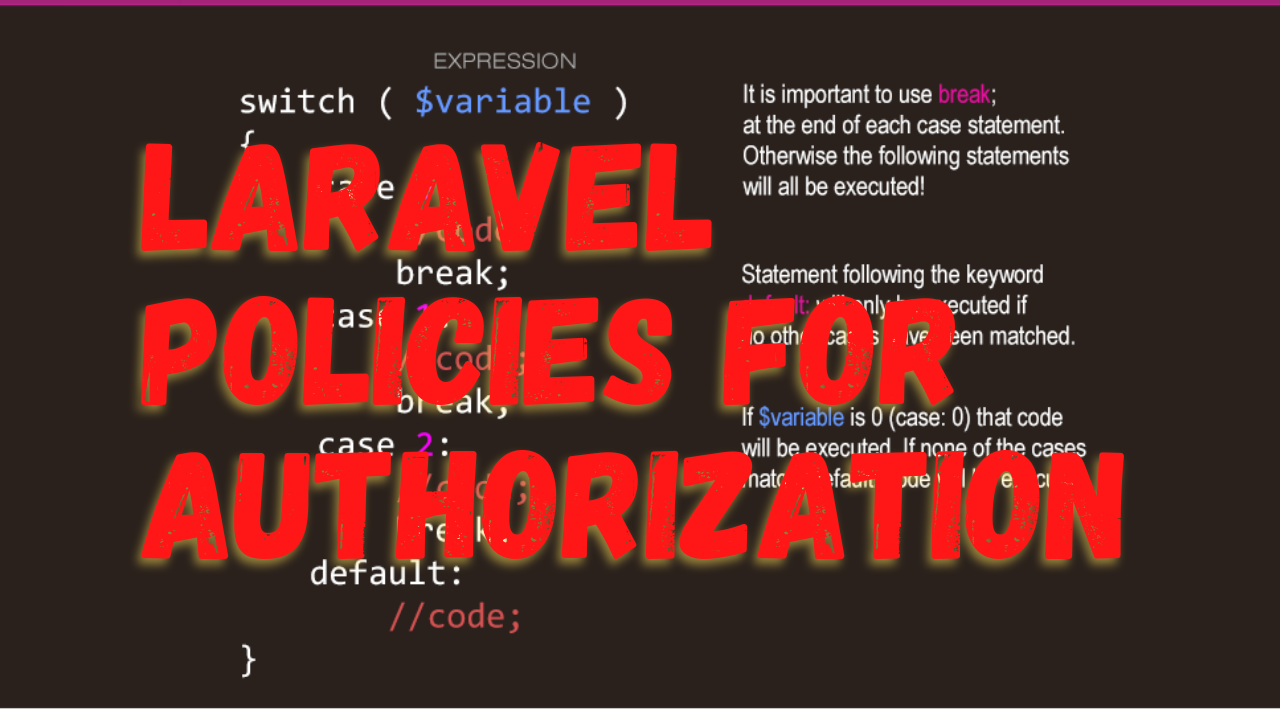Authorization is a crucial component of any web application, ensuring that users can only perform actions they are permitted to. Laravel provides a robust, elegant authorization system that includes Gates and Policies to manage these permissions effectively. This guide delves into creating and using Laravel Policies to manage user authorizations in your application.
What are Laravel Policies?
Laravel Policies are classes that organize authorization logic around a particular model or resource. For instance, if you have a blog application, you might have a PostPolicy to determine what users can do with Post models. Policies are a great way to keep authorization logic concentrated and easy to manage.
Step 1: Creating Policies
Policies can be easily generated using artisan commands. For example, to generate a policy for a Post model, you would run:
php artisan make:policy PostPolicy --model=Post
This command creates a PostPolicy class in the app/Policies directory. Inside, you'll find methods that correspond to various actions users might perform, like view, create, update, delete, etc.
Step 2: Writing Policy Methods
Each method within a policy returns true or false indicating whether the action is authorized. Here’s an example of what the update method might look like in PostPolicy:
public function update(User $user, Post $post)
{
return $user->id === $post->user_id;
}
This method checks if the user owns the post they are trying to update.
Step 3: Registering Policies
Policies need to be registered within the AuthServiceProvider that comes with your Laravel application. Open app/Providers/AuthServiceProvider.php and map models to their corresponding policies in the $policies array:
protected $policies = [
'App\Models\Post' => 'App\Policies\PostPolicy',
];
Laravel will now automatically check these policies when you attempt to authorize actions using these models.
Step 4: Using Policies in Controllers
You can use policies in your controllers to authorize actions before performing them. The authorize method helps in integrating policies smoothly:
public function update(Request $request, Post $post)
{
$this->authorize('update', $post);
// Update the post...
}
If the authorization fails, Laravel will automatically throw an AuthorizationException.
Step 5: Policy Filters
Sometimes, you might need to bypass policies under certain conditions. You can define these conditions in your policy methods or directly within your AuthServiceProvider using before and after filters:
public function before($user, $ability)
{
if ($user->isSuperAdmin()) {
return true;
}
}
Conclusion
Laravel Policies provide a structured, maintainable way to handle authorization logic in your Laravel applications. By defining clear policy classes, registering them appropriately, and using them in your controllers, you can ensure that users only perform actions they are authorized to. This makes your application more secure and easier to manage as it scales.
This blog post educates developers on setting up and using Laravel Policies for authorization, offering insights into effectively managing user permissions within a Laravel application.




